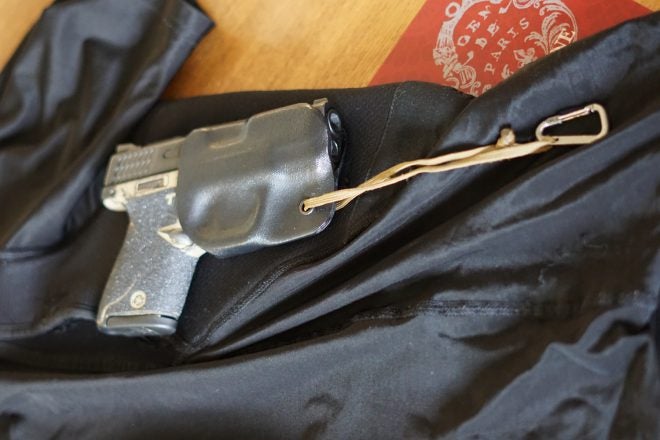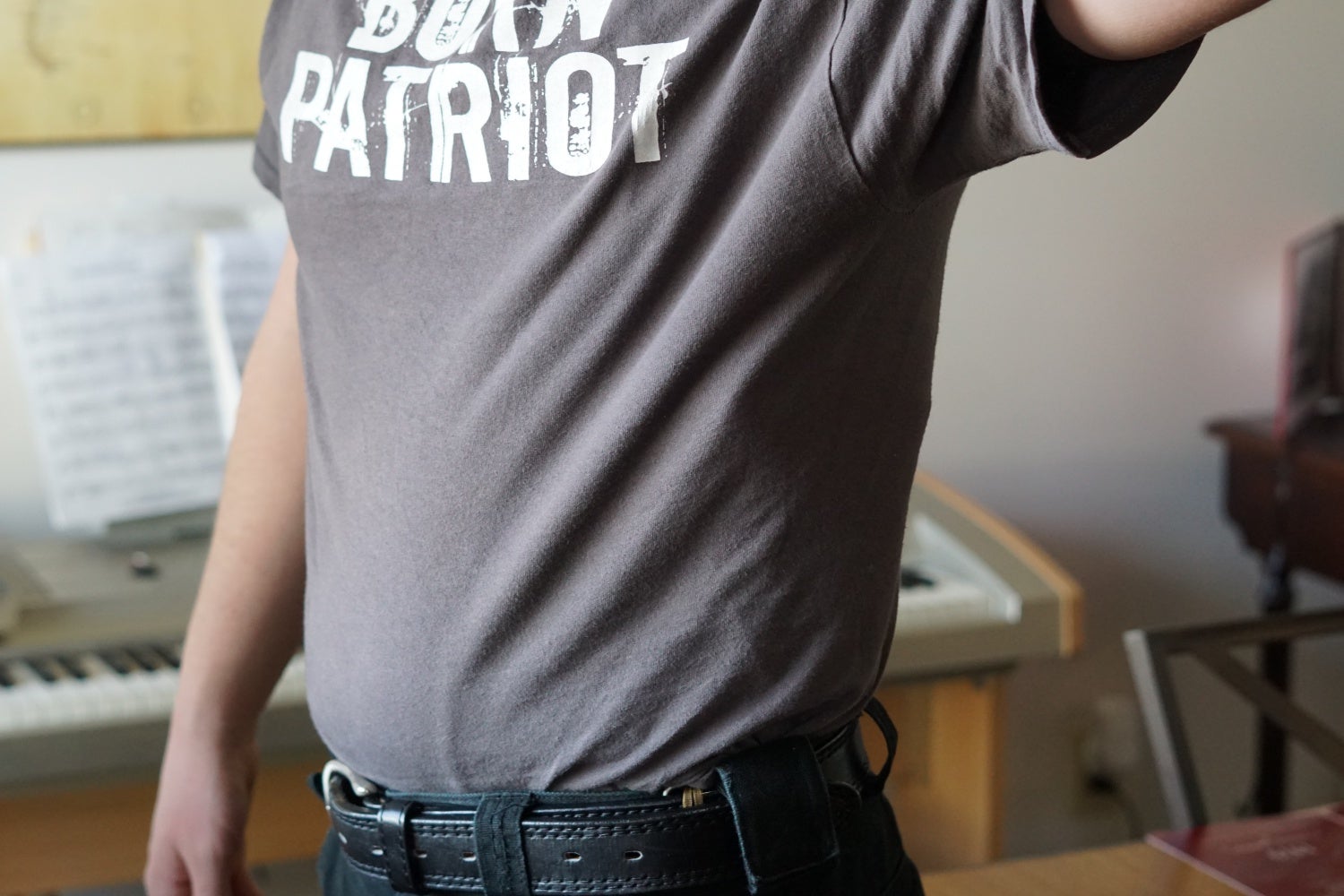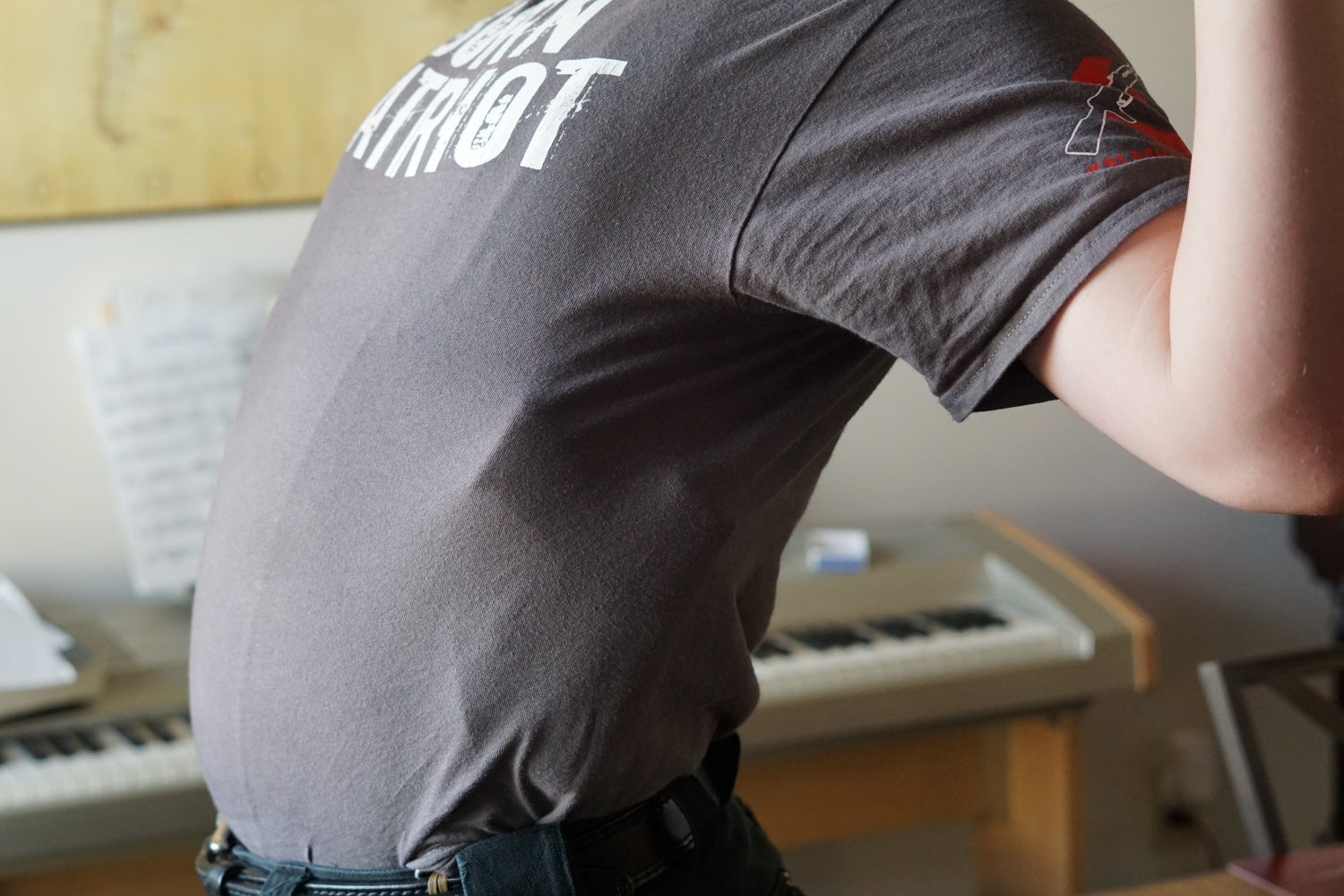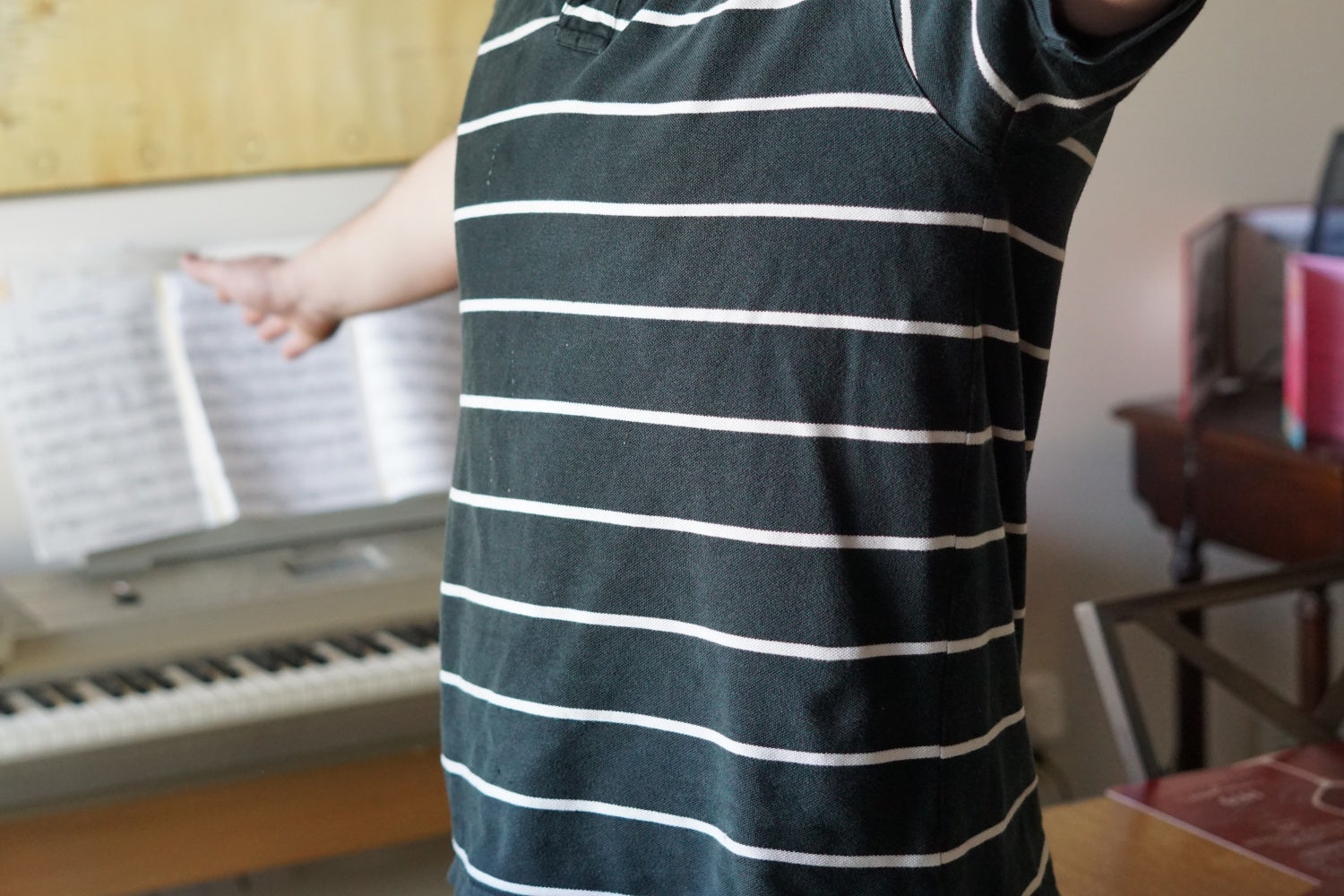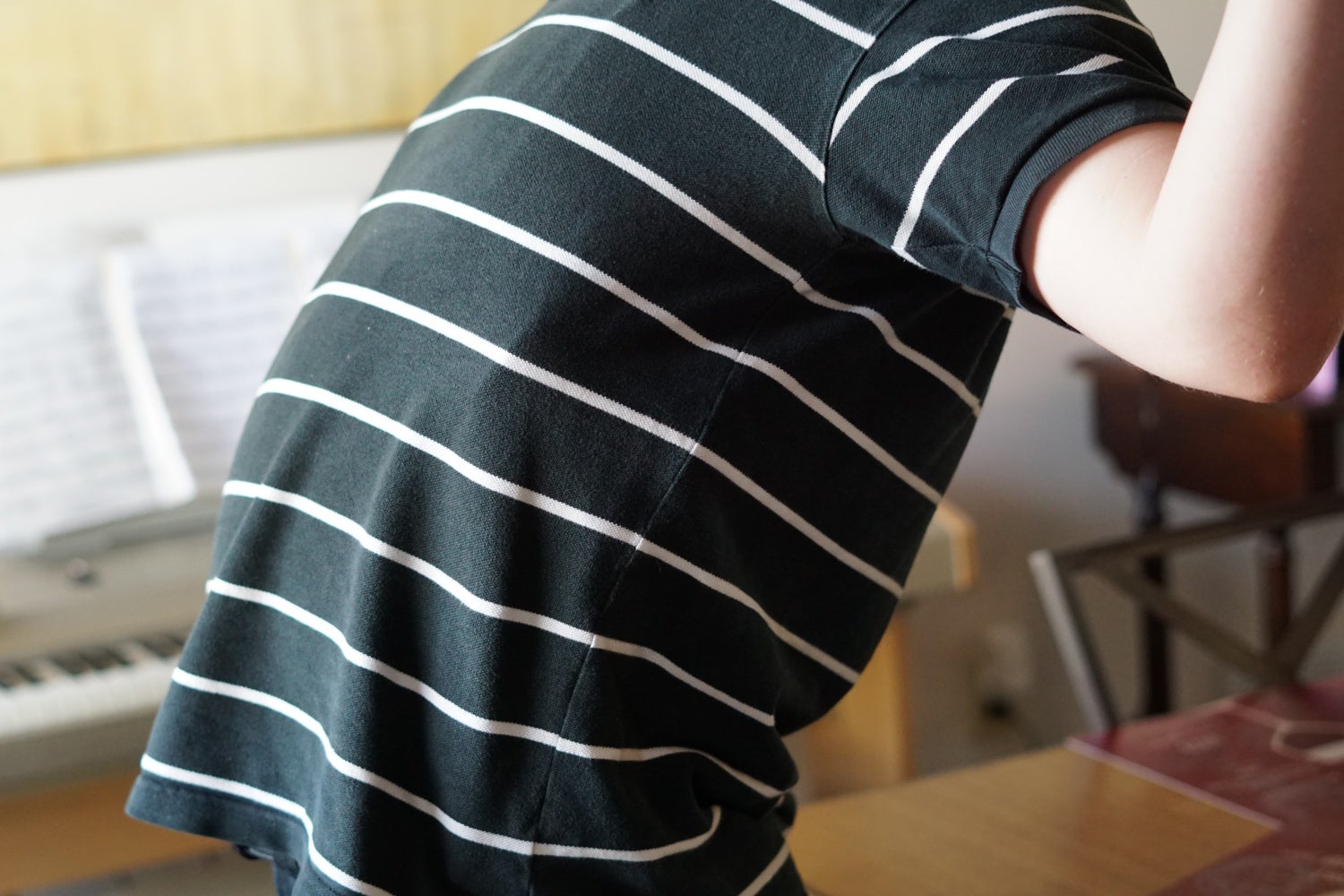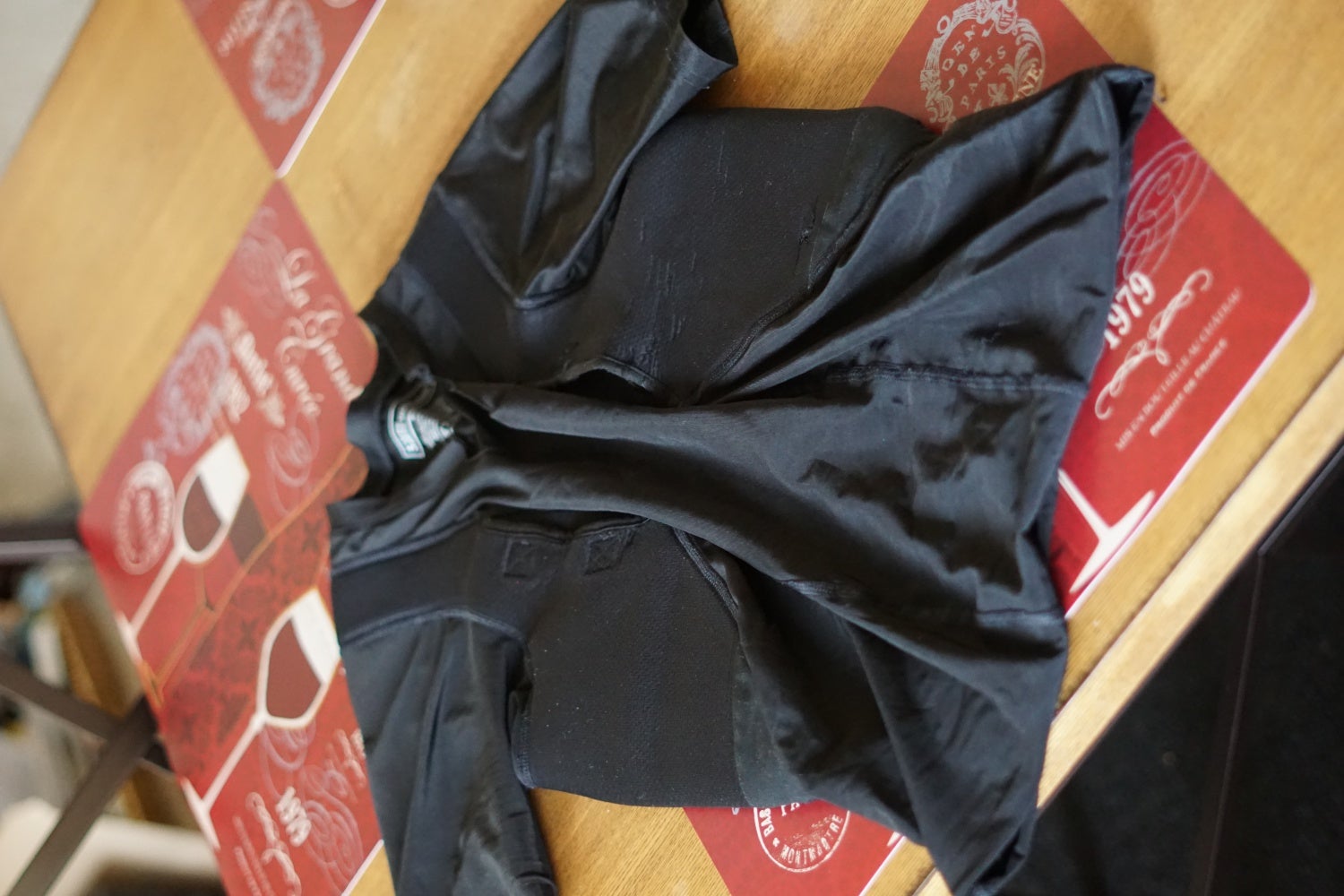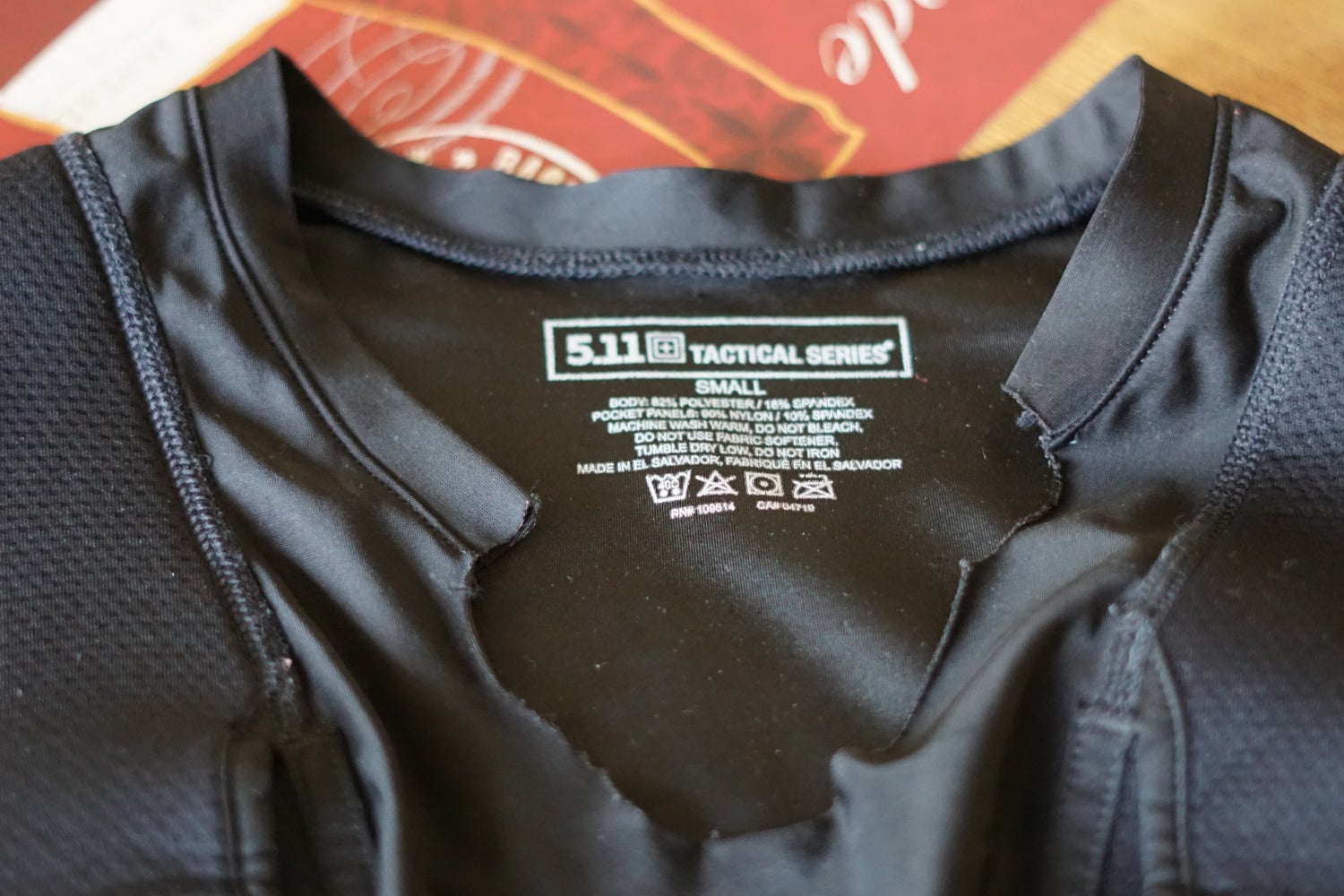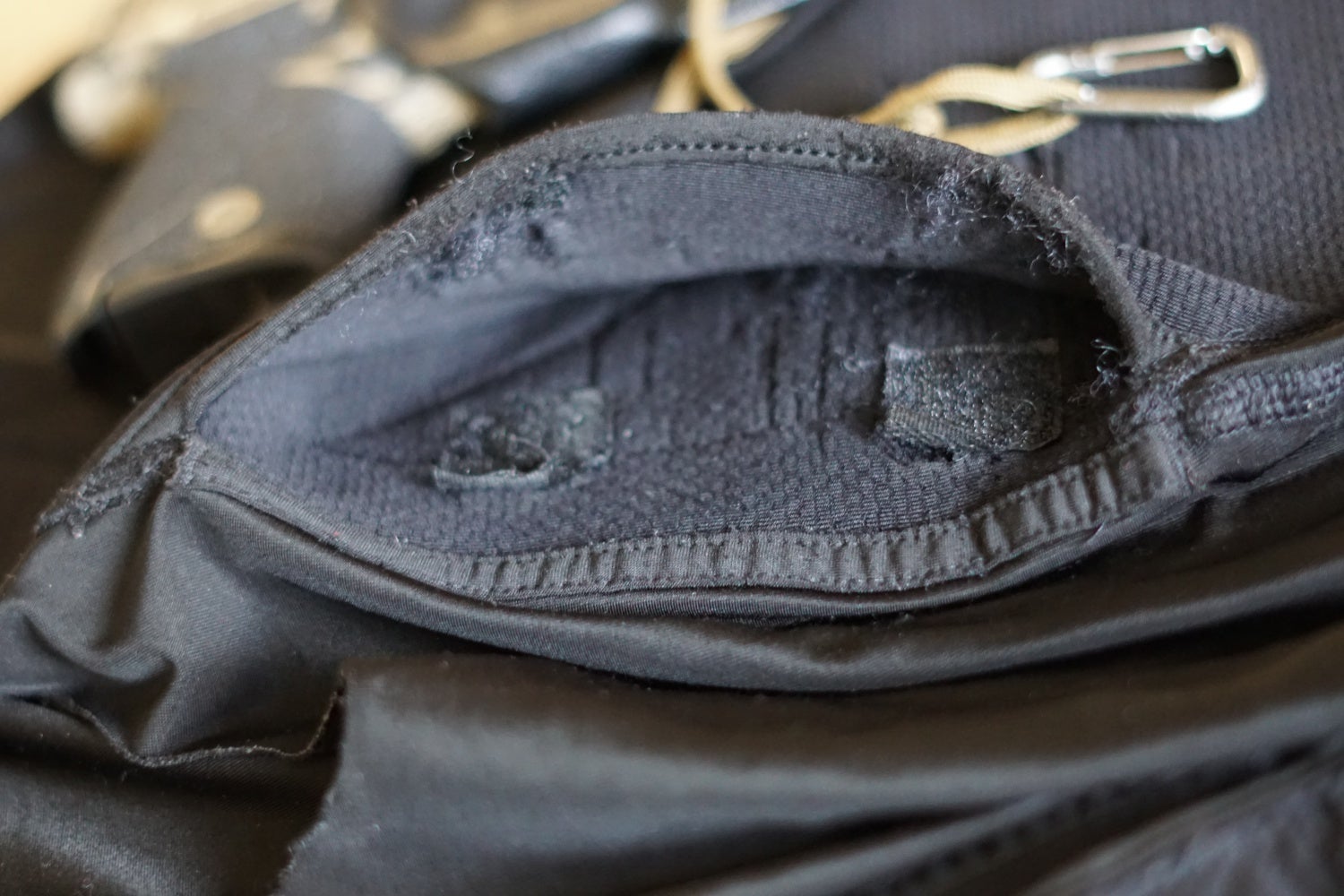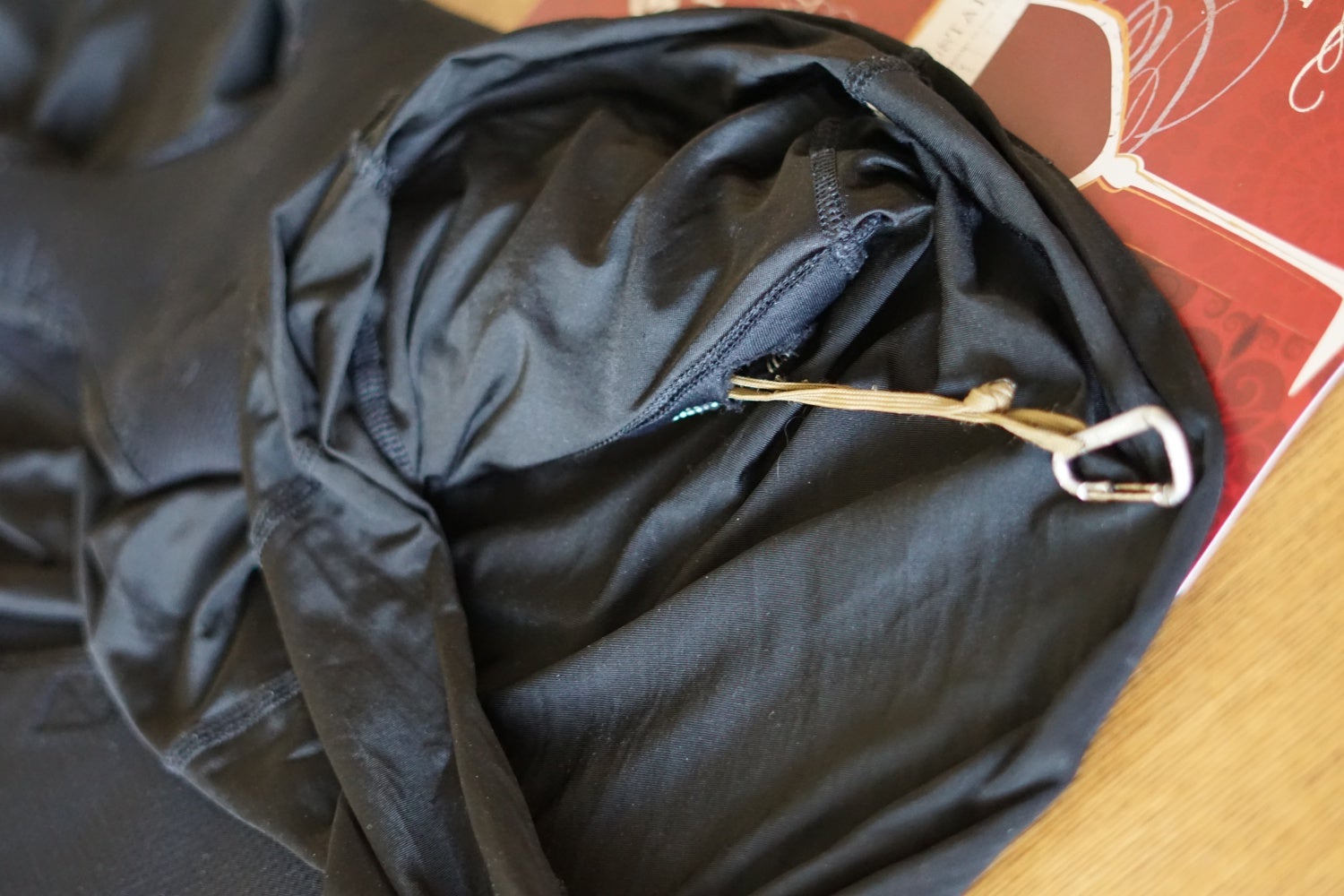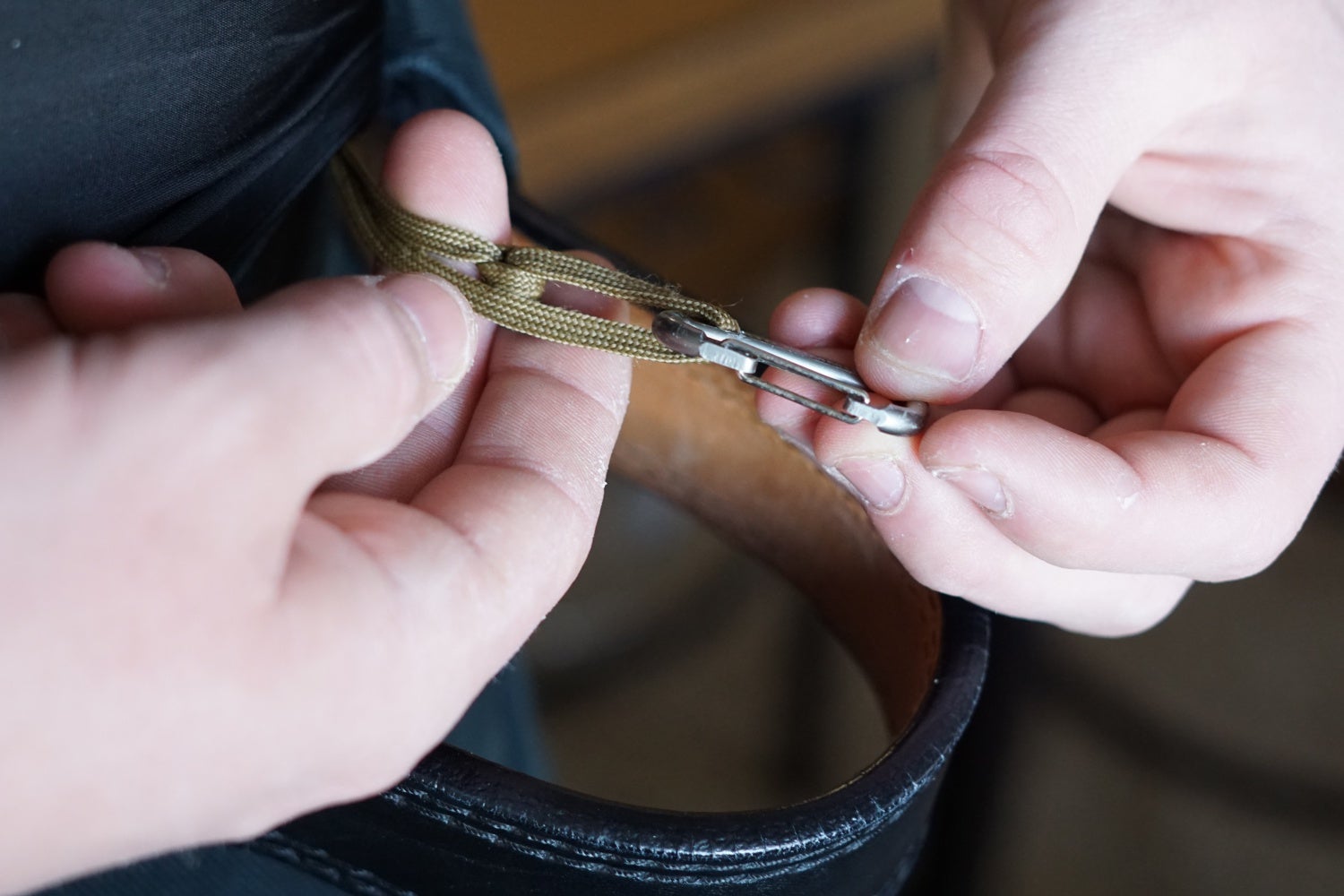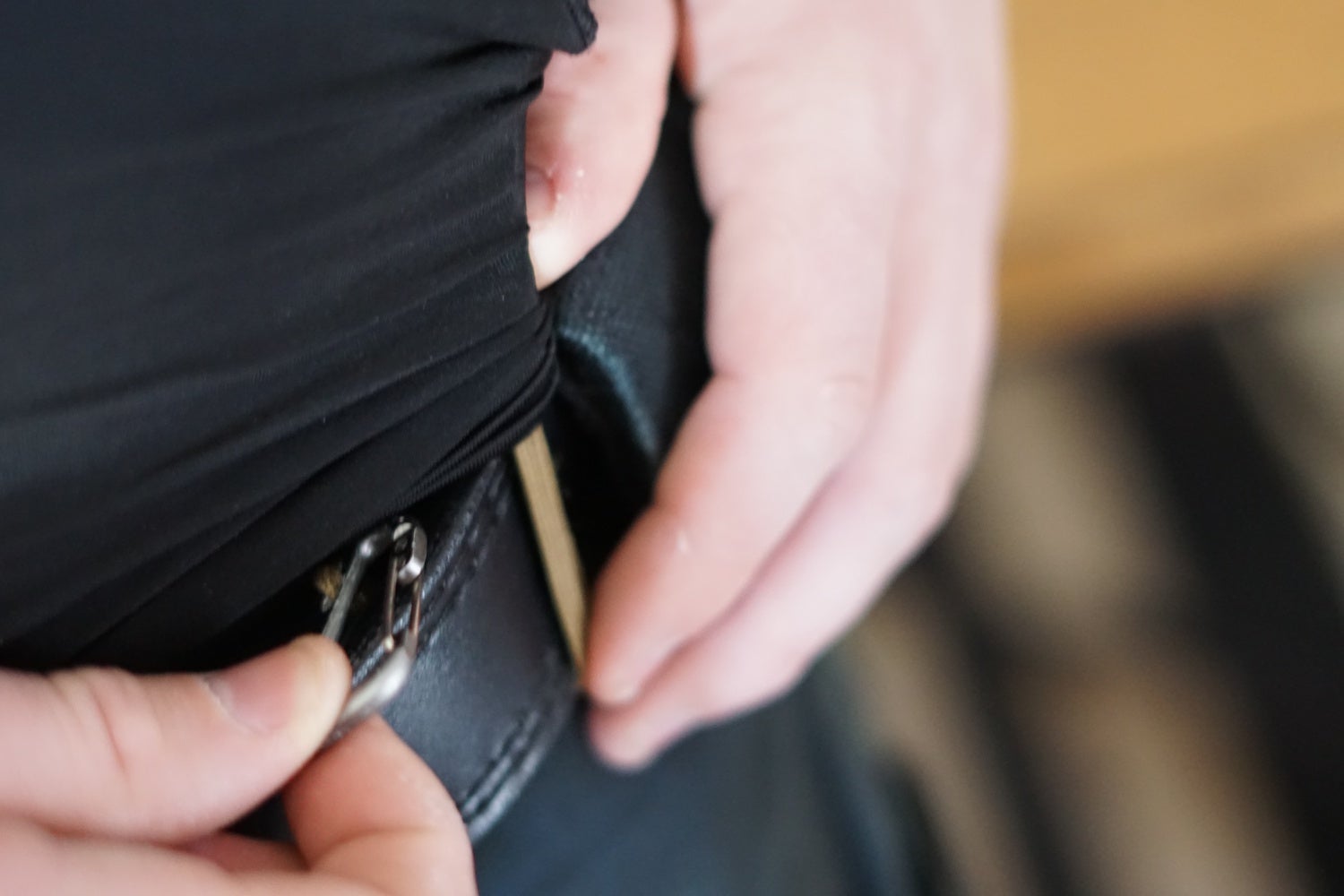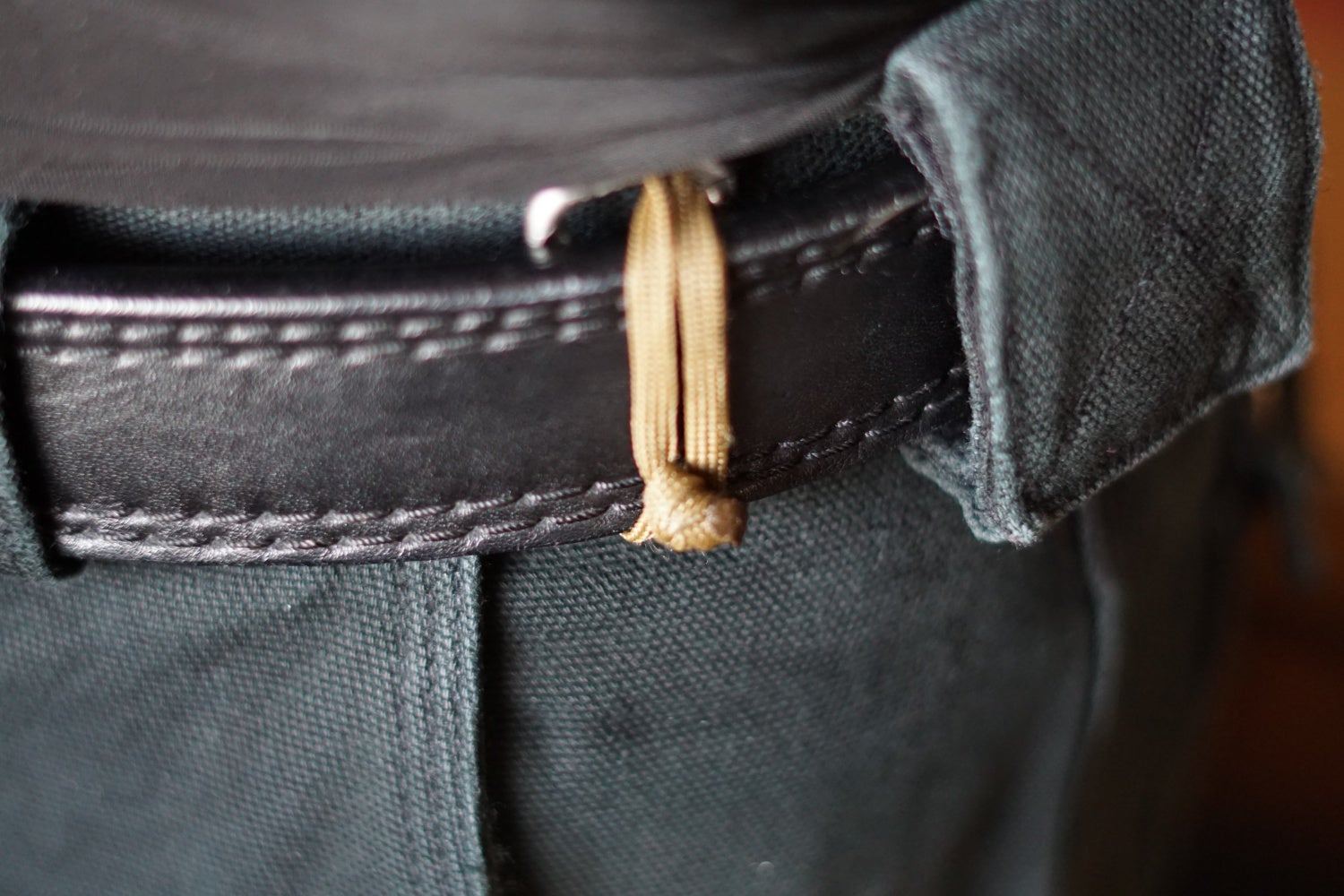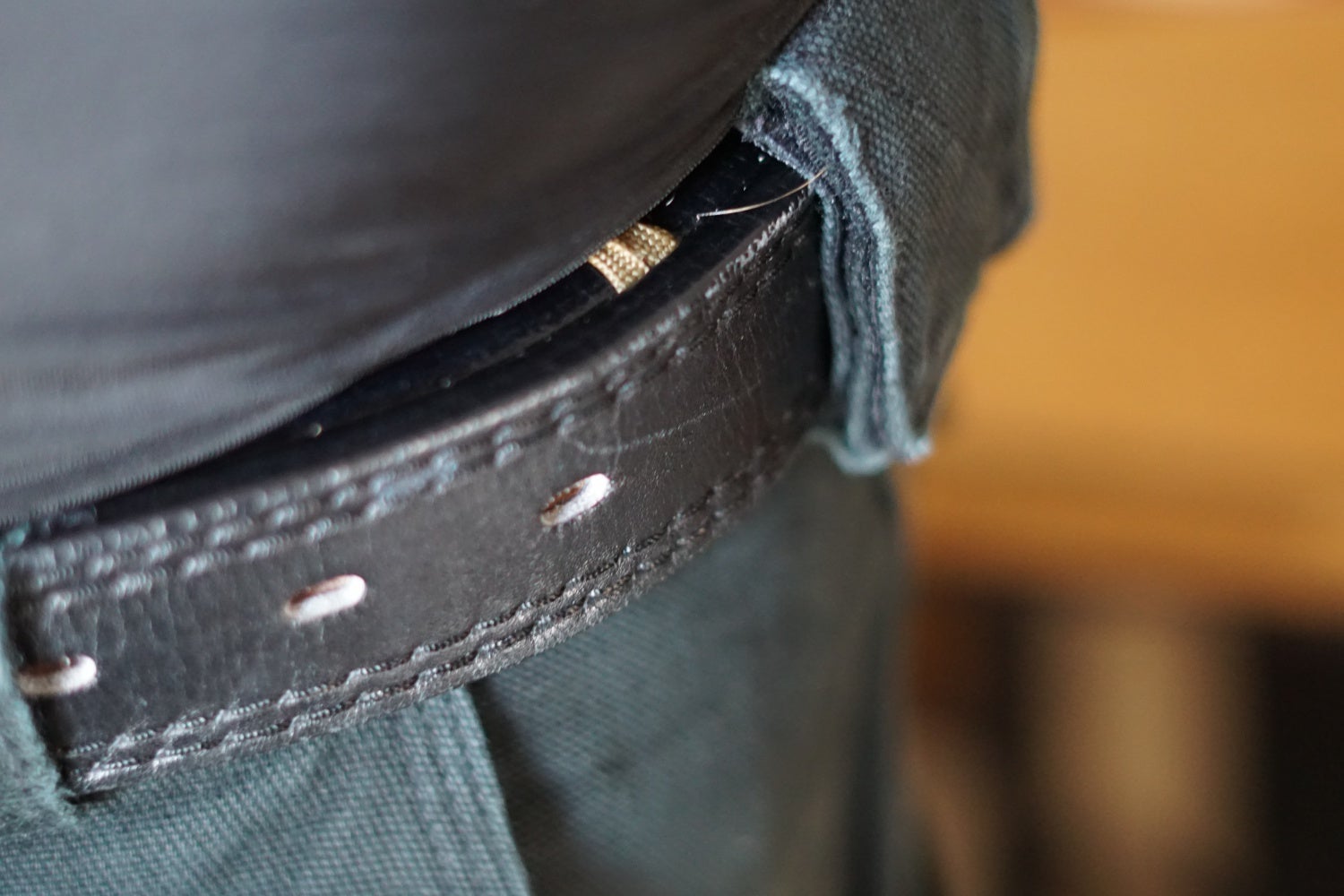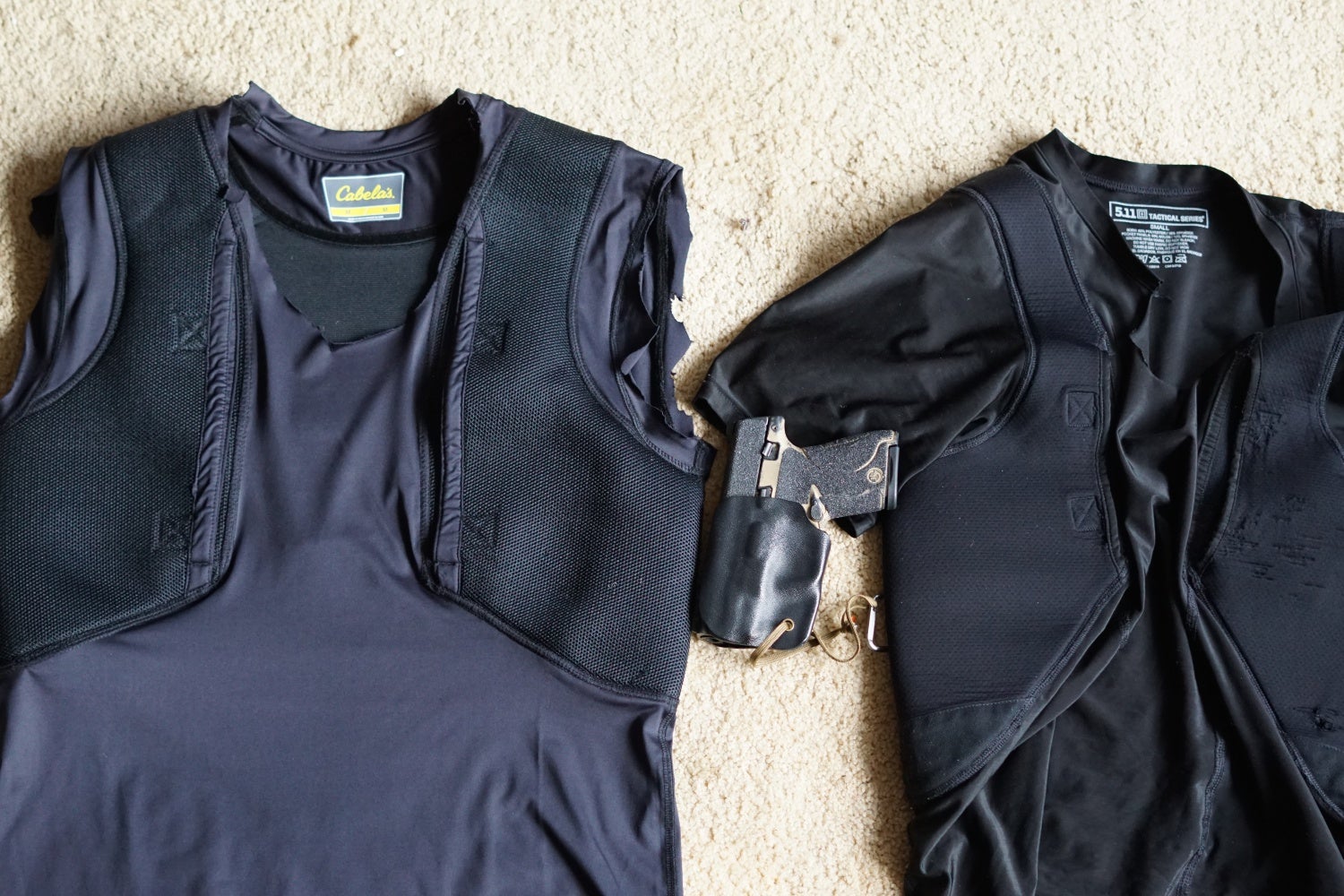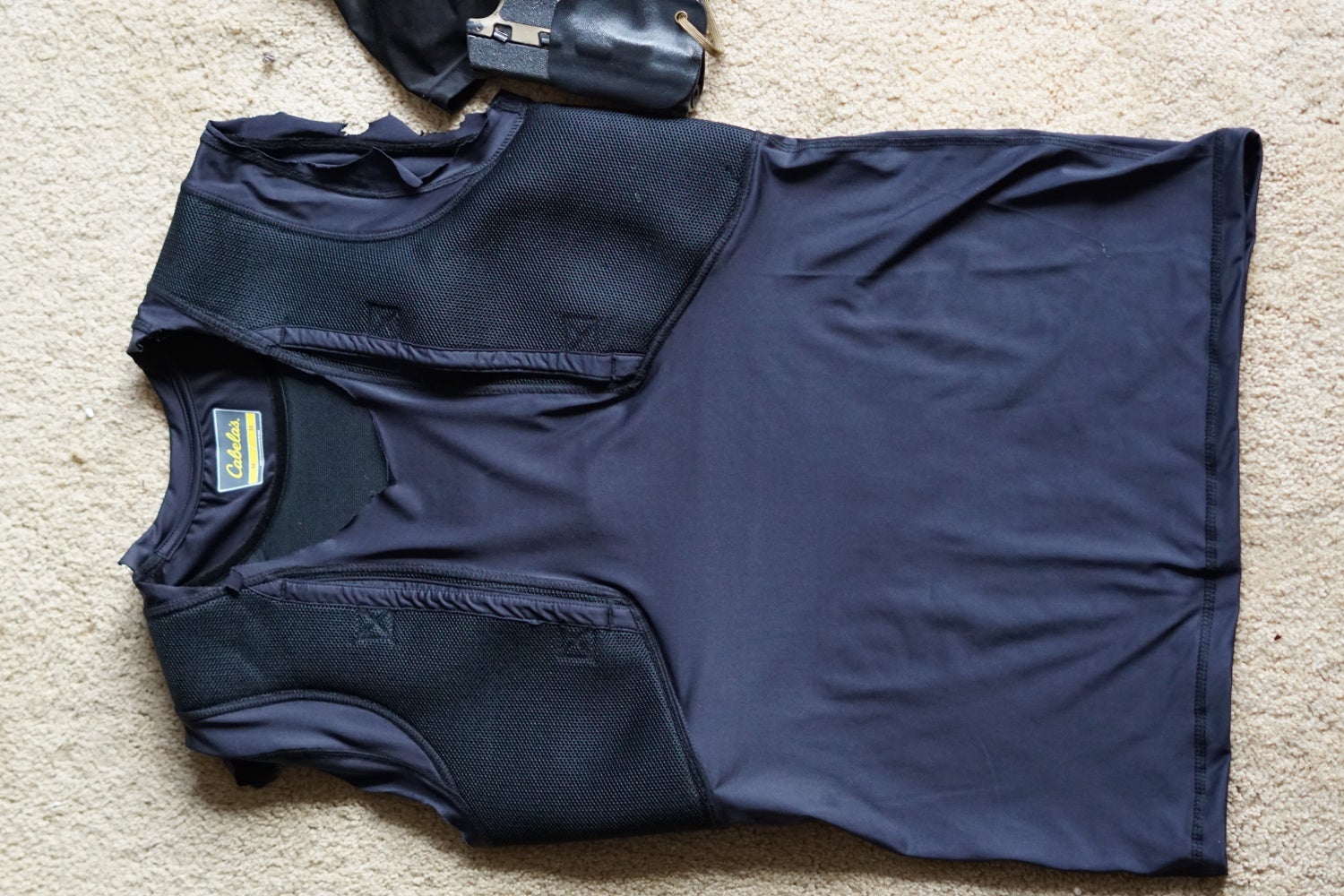With the Taurus Curve review I highlighted a sort of methodology that I consider central to carrying a handgun for self-defense. Namely being that one shouldn’t rely on a single handgun or holster but instead be flexible when it comes to the situation and attire at hand while still trying to provide as much capability when it comes to firepower and ammunition capacity. Particularly with the Curve we looked at deep concealment options with a handgun, but with the concealed carry shirt, I’ll be looking at deep concealment carry products. We mentioned the ankle holster earlier, but something that I don’t see much actual coverage of is the holster shirt. Many might immediately dismiss this sort of carry as unsafe or ludicrous. I would agree at face value but given a few modifications I believe the concealed carry shirt has its place among the deep concealment options out there on the market right now.
A bad example of usage
First off, I have found scant evidence of actual and thorough reviews of the concealed carry shirt. Most of them appear to have received it as a product review, maybe worn it for a day or two, possibly even fired from it at the range but that appears to be about it. This is very frustrating to someone actually weighing the option of one of these holster carry systems, something that is very important if one day your life is going to depend on it.
For the past several months I’ve been actively using a holster shirt for concealed carry. I’ve worn it on everything from long road trips, working, running, even intermingling at social events. It does have some problems associated with it but it also has a number of advantages if these apply to you. I’ve used 5.11’s product in black, in addition to a similar product from Cabela’s. I favor the 5.11 product much more so than the Cabela’s, but in a pinch either will do.
These holster shirts are made of an Under Armour like material that is tight fitting. They have two pockets just underneath the shoulder that is shaped to contour to the side of your chest with openings secured by velcro that face towards the center of the chest. Bare in mind that these pockets are also excellent cell phone or wallet holders, as long as the user doesn’t mind getting these items sweaty. In fact, I’ve heard that some people with heart monitors or diabetes machines use them for this exact purpose, to carry them around in. The shirts can be ordered in black or white, with sleeves or without, and with a “V” neck or a traditional top as well. My overall recommendation is to go with the sleeveless black “V” neck. This allows a minimal presence on your body and doesn’t allow the holster shirt to be seen through the collar of whatever T-shirt you are using on top of it. Having it in black aids in concealing the firearm because darker colors usually conceal better when it comes to shadows and outline.
To begin with, as it is purchased I would not advise wearing it at all. This is for two central reasons. One, it offers zero trigger guard protection because the mesh in which the firearm is kept can be thin enough to accidently catch a foreign object in and discharge the firearm. Second, wearing it as a base layer over bare skin gets downright uncomfortable because the mesh is constantly rubbing against skin. Unlike a regular Under Armour shirt, this shirt has a heavy firearm in it, and produces much friction.
So to alleviate both of these concerns, I’ve found out that using a Kydex trigger guard protector on the handgun takes care of the first problem. But where do you anchor the trigger protector with the 550 lanyard? For me I cut a small hole in the bottom of the mesh pocket and secured a metallic clip to the end of the lanyard. When I inserted my Smith & Wesson M&P Shield with protector on into the left side pocket, I would push the lanyard through the small hole. This would allow me to clip the lanyard to my belt. In addition, if you loop the lanyard around the belt and actually clip it behind it, then bringing the end piece of your belt through the belt loops and over the lanyard, then tucking your next layer shirt over all of this, it really helps with concealment. The second issue I found alleviated through actually wearing a thin T-shirt underneath the holster shirt. This got rid of the friction from the handgun and allowed for a very comfortable wear. Of course, you have to deal with the sleeves riding up on the interior shirt, and this is why I would recommend a sleeveless holster shirt to begin with. Then you have the issue of the collar of the holster riding up on the interior shirt and thus presenting itself from the outside. I personally cut the holster shirt down to size around the collar but in retrospect this probably took away from some of the form fitting capabilities of the shirt itself. This is why I would really recommend going with a “V” neck design instead of a circular one. Of course, on top of all of this I wore a collared shirt, usually a non-button up but a button up could be easily worn as well.
What you lose with a holster shirt that you have with a conventional inside the waistband system is speed in presenting your handgun. Through training and repetition, this downfall can be reversed but it will never be up to the speed that an IWB appendix carry will allow someone. Various tactical companies out there make button up shirts with velcro sections at chest level that allow for a used to rip through the button up and withdraw the handgun. Although this may seem like an excellent system, I’m not about to redo my entire wardrobe according to 5.11’s catalog, just ain’t happening. Thus, when using conventional collared shirts with no buttons, I’ve found that pulling up the shirt with the left hand, while simultaneously reaching across with your right hand allows a safe and fluid draw. There is a possibility of drawing through the top of the shirt, but the opening is so small and the angles are so off, this becomes more cumbersome than practical. The below video illustrates what I’m talking about, in addition to drawing from the secondary pocket for a magazine.
Notice at the end of video the amount of time taken to carefully and safely reinsert the handgun back into the Kydex protector. In an actual self-defense situation, reholstering my handgun should be the least of my priorities so I’m not concerned about this. If Law Enforcement comes on the scene, I should be planting myself on ground with the handgun clearly away from my body, not reholstering it.
The biggest problem with the holster shirt is the bottom portion of the handgun’s grip. This point will stick up the most when facing someone or stretching the shirt. I’ve experimented with gluing a tubular plastic on the inside of the pocket, but all this does is destroy the plastic with the glue. The other very important note with the shirt is that certain social situations have to be avoided, such as someone hugging you or somehow reaching their arm/hand around your chest. This easily gives the handgun away to even the casual observer. So, if you’re entering into a social event where you know hugging is going to take place, I would honestly reconsider an ankle holster if you are truly intent on deep concealment. However, when I’m not in a social situation, or I’m on a long-distance drive, this shirt is truly the most comfortable option out there that I have tried out.
A very good feature of the shirt is that it allows someone to conceal carry while in gym shorts and out for a run. Not only does it allow a spot for a handgun to be held securely, but you can also throw your keys/wallet in the other pocket and have them be secure as well. Having a place to put my keys and wallet while running outside is always a hassle because most gym shorts don’t have pockets for this, and even if they do, the bouncing motion of the device wouldn’t help anyways. The lanyard of the Kydex protector can be easily attached to the drawstring of gym shorts.
The other problem with the holster shirt is longevity. If you intend to use it on a daily basis, I can almost guarantee you that you’ll have to replace the shirt once a year or at least once every several years. It gets old, the material starts to fray, especially if you have a firearm with stippled grips or even that skateboard tape material, it really starts to come apart. Even the width of the neoprene that covers the handgun starts to decrease as it is worn more often. Compared to the right side pocket of the shirt, which I barely put anything in at all, the left side is at least half as thick now than when I started wearing it. As a deep concealment “option” maybe worn a week or two out of the year for particular events where deep concealment is a must, the product should stand up to several years worth of wear, at least a decade if cared for. The other point I have to make is that your holster will now become a part of your laundry, as you’ll have to wash it once a week at least. This might not make a difference, but if by chance you need to leave your house and your laundry is still being done, you are essentially out of a holster to wear.
The other product I mentioned, Cabela’s holster shirt, I would not recommend at all. The pockets are much too thin, the material isn’t elastic enough, and the pocket edges themselves tend to creep up and bunch up when worn, creating a bulge in the outer shirt that is very noticeable after a while.
I hope this has been an informative review, and I hope that readers looking into purchasing one of these shirts are either satisfied with what they read, or have found a very good reason not to use one of these in their deep concealment arsenal. At the end of the day, I would like to reiterate that the holster shirt should not be worn as it is sold, and it should not be a primary means of carry. It should be one of many when it comes to both firearms and holsters, that should be able to suite any occasion to conceal carry effectively and legally.
 Your Privacy Choices
Your Privacy Choices
